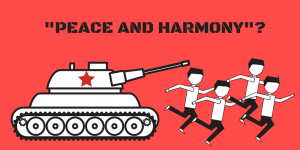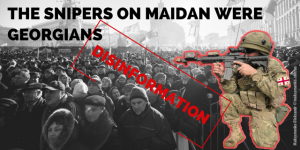This week, we saw a continuation of the trend from two weeks ago: polishing Russia’s soviet era history. Whereas last time we saw the Russian MFA incorrectly giving credit to Soviet soldiers for saving Bulgarian Jews, this week we saw further extreme historical “creativity”, like reported by euvsdisinfo.eu.
As explained in detail here, the Soviet invasion of Czechoslovakia was described in the official TV channel of Russia’s Ministry of Defence, Zvezda, as a way of preserving peace and harmony in the region. It was in fact a foreign hostile invasion.
Coinciding with the official Day of Remembrance of the Victims of the Holodomor, this man-made famine in Ukraine during 1932-33 was subjected to extensive historical revisionism by Russian state controlled TV. it is not the first time that atrocities are used for disinformation purposes. In the TV show “Vremya pokazhet” it was stated that it was a lie to claim that this was a purposeful famine, directed at Ukrainians. And in another popular TV show on Russian state TV it was claimed that it was in fact an epidemic that claimed so may lives during those years in Ukraine, not an intentional policy of the Stalin era.
The facts are that, in a country once referred to as Europe’s bread basket, people suddenly starved to death in masses due to lack of food, caused by a deliberate policy to punish the Ukrainian peasantry, which had continued to resist the Soviet policy of collectivization. On 23 October 2008, the European Parliament adopted a resolution that recognised the Holodomor as a crime against humanity, caused by the deliberate policies of Stalin’s USSR. And on 28 April 2010, a resolution of the Parliamentary Assembly of the Council of Europe declared the famine was caused by the “cruel and deliberate actions and policies of the Soviet regime” and was responsible for the deaths of “millions of innocent people” in Ukraine, Belarus, Kazakhstan, Moldova and Russia.
New myths, old topic
During the past week, pro-Kremlin disinformation outlets marked the fourth anniversary of the beginning of the protests at the Maidan Nezalezhnosti (Independence Square) in Kyiv, Ukraine. For at least four years, Ukraine has been a permanent front-line and testing ground for the multi-language pro-Kremlin disinformation campaign, in order to justify Russia’s military intervention and illegal annexation of Crimea.
This week’s disinformation gold mine was an Italian documentary that claimed it was Georgian snipers who opened fire on protesters in February 2014. For a detailed debunk of the flaws, manipulations and inaccuracies the documentary is built on, read the analyses by Myth Detector, StopFake and the Insider.
The story was covered by the main Russian TV channels and news outlets and on news portals in English and in Georgian. Let’s look at how the disinformation was tailored to these different audiences.
- For English language readers, the credibility of an established European media outlet was of importance. The website spreading the story starts with explaining that the “TV documentary emanates from the mainstream media” from the “most watched TV channel in Italy”. In direct contradiction to this argument, though, the next statement says that “the Western corporate media remains silent” about the issue, but “independent ” ones ensure its distribution.
- For the Russian audience, disinforming reports about Georgian snipers were easier to serve. The “news” about the documentary was accompanied by the usual allegations of Ukraine being governed by Nazis and denials of Russian military presence in Ukraine. Furthermore, former Georgian President Mikhail Saakashvili has been a top target for conspiracies and disinformation this autumn, so implicating him fitted the general disinformation picture.
- In Georgian, the disinformation mainly followed the reporting in the Russian language, Myth Detector notes. One outlet directly accused Saakashvili of the shooting. Another made the message even simpler. It quoted the Italian journalist’s Facebook post that claimed; “snipers admitted: EU-backed opposition leaders, rather than supporters of President Yanukovych, opened fire on protesters”. As usual, no evidence for the claims was provided.




